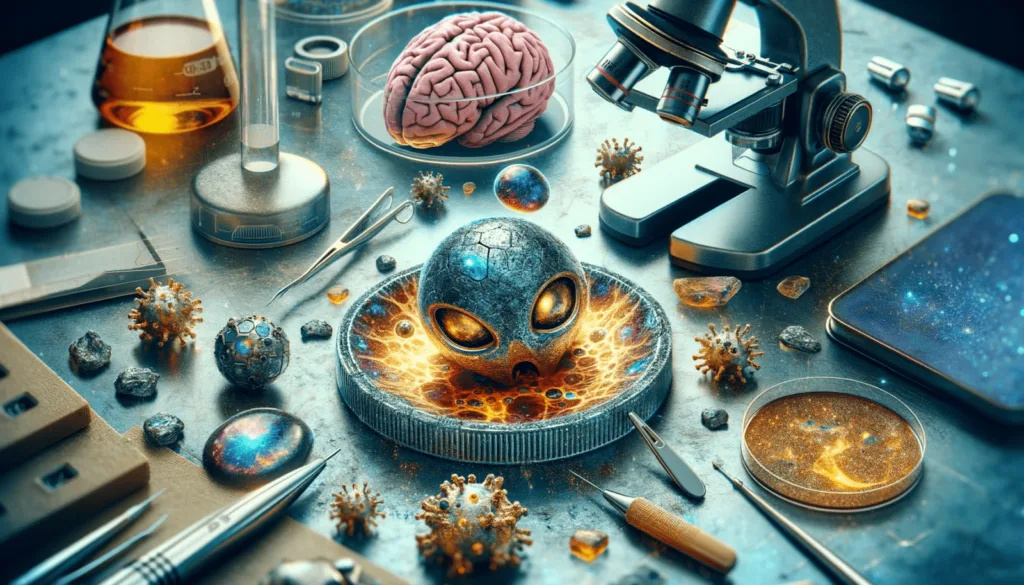Ross Coulthart Interviews Professor Garry Nolan

Ross Coulthart interviewed Professor Garry Nolan in June 2022 for 7NEWS Spotlight, shedding light on Professor Nolan’s remarkable achievements and views on Unidentified Aerial Phenomena (UAPs). Professor Nolan, a Stanford University-based professor of immunology and Nobel Prize nominee, is highly respected in his field. He holds multiple patents, has published numerous papers, and has two companies listed on Nasdaq.
In the interview, Coulthart explores Professor Nolan’s transition from a distinguished immunologist to a key figure in UAP research. Nolan, now the Chairman of the Sol Foundation, advocates for scientific investigation into UAPs. His decision to engage publicly in this field stems from his personal experiences with UFOs/UAPs. During the interview, Nolan discusses the U.S. government’s historical approach to UAPs, including secrecy and disinformation, and shares his insights on the potential origins and technologies of UAPs.
Nolan suggests that UAPs might not be extraterrestrial but could have been present on Earth longer than humans. He speculates on the possible physical and technological aspects of UAPs, including their ability to defy known physics. Nolan also touches on the impact of UAPs on individuals’ health, citing cases where close encounters led to physical harm.
Professor Garry Nolan’s involvement with the CIA and government officials, as detailed in the interview with Ross Coulthart, revolves primarily around his expertise in immunology and his development of advanced blood analysis techniques. Nolan mentions that the CIA approached him due to his unique capability in this area, which was unmatched elsewhere.
Specifically, he was asked to conduct tests on individuals who had been exposed to UAPs. These requests stemmed from the fact that some personnel, particularly those in the military or intelligence sectors, had reportedly encountered UAPs and subsequently experienced various health issues.
His work included analyzing the brain scans of these individuals. Nolan discovered unique patterns and anomalies in the brain tissues of those who had reported UAP encounters, particularly in areas of the brain associated with sensory perception and intuition.
The interview looks into various UAP incidents and materials, including Nolan’s analysis of a molten metal sample linked to a UAP sighting and his thoughts on alleged alien technology. Nolan discusses the potential implications of UAP technology, such as anti-gravity and energy generation, and reflects on the challenges and skepticism faced by scientists in this field.
Professor Garry Nolan discusses his analysis of certain materials and Polaroids that were linked to UAP encounters and phenomena:
- Analysis of Molten Metal (Council Bluffs, Iowa Event): Nolan talks about a particular case where police and witnesses reported a pile of molten slag falling from a UAP. The material was still bubbling and hot when discovered. Nolan analyzed this material and found it to be a mix of iron, nickel, and other impurities. However, the intriguing aspect of his analysis was the inhomogeneity of the material. Although it contained the same elements throughout, the ratios of these elements varied in different parts of the material. This inconsistency suggested that the material was not mixed thoroughly, a characteristic that seemed unusual for conventional materials.
- Polaroids from the Police: Nolan had access to Polaroids taken by the police during the Council Bluffs event. These photographs documented the incident and the molten metal found at the scene. Nolan mentioned these Polaroids as part of the evidence supporting the occurrence of this unusual event.
Throughout the conversation, Nolan emphasizes the need for open scientific inquiry into UAPs, regardless of the potential implications for our understanding of physics, life, and the universe. The interview concludes with Nolan expressing optimism about forthcoming disclosures and public acknowledgment of UAPs by governments and scientific communities.

